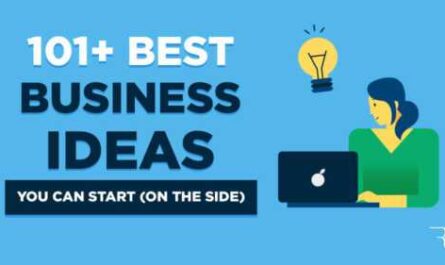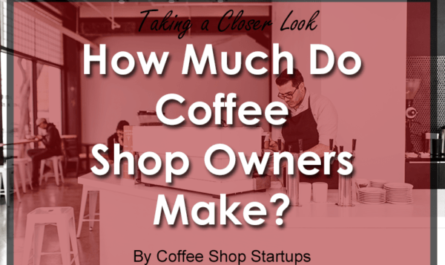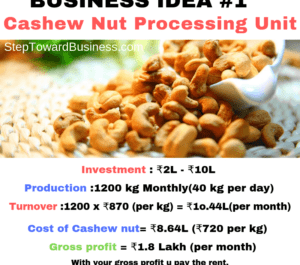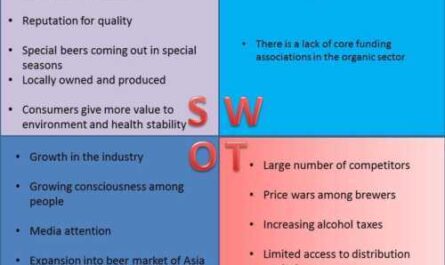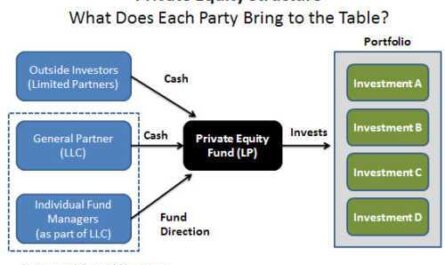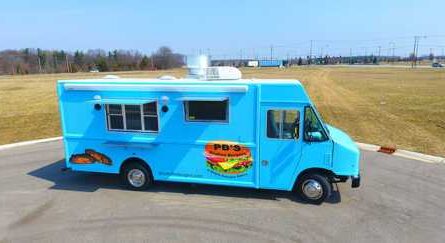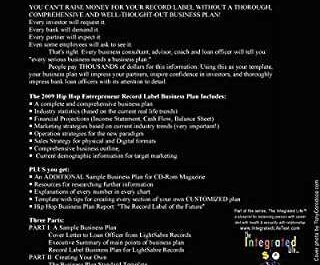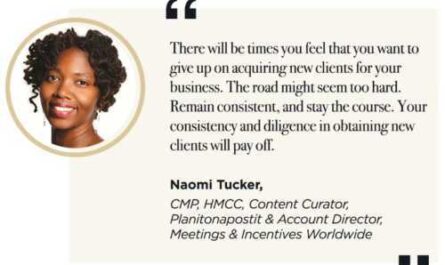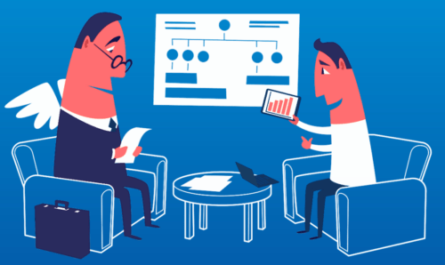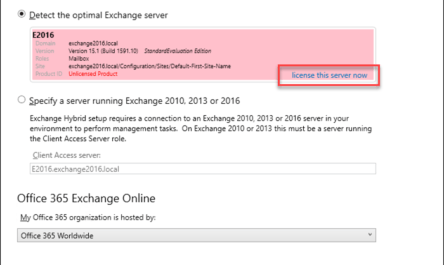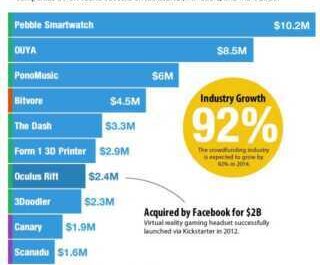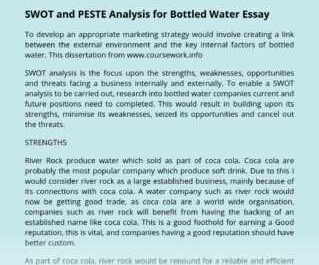Are you looking to open an e-commerce store but you don’t know which model to choose? here are 8 types of ecommerce business models along with an example of companies that use them.
What is e-commerce?
Electronic commerce is a method of exchanging goods and services between buyers and sellers through an electronic medium. Electronic commerce is also known as paperless business information exchange using EDI, email, electronic funds transfer, etc.
E-commerce has become very popular with people due to the convenience it offers to buyers and sellers. ; economic benefit for retailers and cost savings for customers; as well as the secrecy it offers to customers.
The concept of e-commerce is made possible by technologies that enable online payments, such as electronic fund transfers, supply chain management, internet marketing, online transaction processing, exchange of computerized data (EDI), inventory management systems and automated data collection systems.
The e-commerce niche has been established for a long time and is functioning well, so companies are now free to use the various business models available to do business. Many future eCommerce business owners simply don’t know how an eCommerce business works and what business model options are available to them. Below we have listed the different classifications and business models that an ecommerce business can operate on.
8 types of e-commerce business models illustrated by companies
There are different e-commerce business models and they include:
- Drop shipping business model
The Drop Shipping business model is a retail model where you don’t have to worry about the costs of running your business and storing products. The model involves partnering with a wholesale supplier who maintains your inventory and delivers the goods directly to your customers on your behalf.
In this template, all you have to do is create a platform that lists the products you are offering for sale and do business marketing. Inventory, shipping, and handling are all handled by the shipper, although there is an additional charge for this, it’s better than stocking a product with no guaranteed demand.
This type of e-commerce business model is suitable for businesses
- Who doesn’t have a big investment to buy and store inventory
- Who prefers mobility to fixed offices
- Who prefers to pay more attention to business marketing
However, there are some limitations to the dropshipping business model. These included
- big competition
- low margins because many companies sell the same product
- strong dependence on the sender
How does drop shipping work?
Dropshipping works on the principles of an aggregator business model in which you focus on building a brand for your organization while the actual product or service is provided by someone else under your brand. Many senders use Shopify and Oberlo. It’s quick and inexpensive to set up. A popular model is to build a store fast and generate traffic with Facebook ads. In this model, the margin is low, so making a profit will be tedious work.
Calculating profit with this model requires a deep understanding of the market and precise calculations, and orders are passed to the shipper as they arrive. This is done through automated or manual emails, calls or spreadsheets as specified in the contract between you.
There are many dedicated dropshipping sites out there, including Shopify, Aliexpress, etc.
- Wholesale and warehouse storage business model
The business model of online wholesale and warehouse storage is comparatively simpler than dropshipping, this business model works on the principles of offline selling. In other words, you buy products directly from a manufacturer or dealer at discounted prices, store them in your warehouse, and sell them competitively.
This business model is suitable for businesses with guaranteed demand. Building and maintaining an e-commerce and warehousing business model requires a lot of investment and control. This type of e-commerce business model is suitable for companies that
- want every aspect of their business to be under their control
- deals with exclusive products
- guaranteed demand for their products
- want to sell bulk goods
- want to serve other companies (b2b)
However, the wholesale and warehouse business model has some limitations.
- Lots of initial investments
- Businesses can suffer losses if there is not a lot of demand
- Dependence on sales volumes for profit.
Examples of a business model for wholesale and warehousing
DollarDays, with a product catalog of 26,000 products, is a prime example of wholesale and warehouse storage. business model.
- Business template for white labeling and manufacturing
This business model is ideal for organizations. who do not have sufficient investment to manufacture their own products. This business model allows you to outsource manufacturing, while having your manufacturer name on the product label.
This e-commerce business model is profitable because you are already using the infrastructure set up by the subcontracting company. This business model is suitable for companies that:
- want every aspect of the product to be under their control
- , in products similar to other competitors
- It is not for the engaged companies, because the goods produced after their production belong to the company.
- Companies must develop a process for monitoring and maintaining quality control
BigCommerce is a good choice if you have a branded product and want support. However, their pricing model can get expensive when you start making big sales. The Dollar Shave Club is one such example.
- Private labeling and production
If you have an idea for the perfect product, but don’t have the money or the desire to build your own factory, this could be a suitable ecommerce business model. Companies that make products for off-site sale send blueprints or prototypes to a contract manufacturer who builds the product to customer requirements and can ship it directly to the consumer, a third party like Amazon, or the company. who sells the final product.
On-demand manufacturing allows you to quickly switch suppliers if you experience quality issues. Start-up costs are minimal and if you want to start your own production later, this is a good way to test a new product or concept. Thomas Felice is one of those examples that uses this model.
- E-commerce by subscription
Dollar Shave Club is one of the most popular and successful e-commerce subscription brands. Other examples of subscription services include Fix Stitch, Blue Apron, and Natural Box. Community-supported farm boxes are popular locally.
These ecommerce businesses are built on a subscription model that delivers a box of products to customers at regular, scheduled intervals. Subscription companies have relatively reliable sources of revenue and can easily entice customers to purchase additional subscriptions or encourage their contacts to follow.
Choosing the right products and niches can be difficult. Successful subscription boxes tend to fall into a small handful of product categories: health and personal care, beauty, fashion and food. Outside of these areas, few subscription companies thrive. Some popular companies in this niche include; Ipsy, Bespoke Post, Dollar Shave Club, etc.
- Credit model
This income model is prevalent in continental Europe, but has recently found its way to other parts of the world. It is a buy-now, pay-later model that allows customers to purchase goods and services on credit and pay later.
Income is generated in the form of profit plus an interest rate. UK clothing company Next received a lot of responses after adopting this revenue model.
8 main areas of e-commerce
- Business to Business (B2B)
Business to Business, known as the B2B model, is the largest revenue-based e-commerce model, which includes billions of dollars. In this model, buyers and sellers are economic entities. B2B describes business-to-business transactions, for example between a manufacturer and a wholesaler or between a wholesaler and a retailer.
The volume of B2B transactions is much higher than the volume of B2C transactions and any other transaction.
The main reason is that there will be many B2B transactions in a typical supply chain, including subcomponents or raw materials, and a single B2C transaction, especially the sale of the finished product to the end consumer.
The advantages of the B2B model:
- Promote business online.
- Import and export of goods.
- Identify buyers and suppliers.
- Positional trading guides.
A B2B business is focused on providing products or services to another business. It can be on different areas. Few of them are software companies, vendors, hosting companies. There are many other e-commerce businesses under this type.
Common examples include ExxonMobil Corporation, Boeing, Archer Daniel Midlands, IBM. These businesses have their own corporate e-commerce platforms that work directly with other businesses in a closed environment. B2B Ecommerce Businesses Usually Need More Startup Money
- Business to consumer (B2C)
It is the densest e-commerce market. Consumer commerce is the first and most common type of electronic commerce. In this type of online business, the sale is offered to individual customers. This type began to develop after 2095 and has now grown into one of the most popular e-commerce models.
The B2C model is operated by retailers and marketers who use clear data in various marketing tools to enable them to sell their products on the internet. users. Internet users can use the shopping cart for whatever they need. Payment is mostly made using credit cards or payment gateways like PayPal.
Direct customer engagement is a major differentiator from other business models. B2C is generally a customer-related activity. The basic concept of this model is to sell a product online to consumers.
B2C selling is a traditional retail model where a business is sold to individuals, but the business is conducted online and not in a physical store. B2C is almost everywhere. This includes names such as Newegg.com, Overstock.com, Staples, Wal-Mart, Target, REI, and Gap.
- Consumer to consumer (C2C)
Consumer-to-consumer (C2C) or citizen-to-citizen electronic commerce includes electronic transactions between consumers through a third party. A typical example is an online auction where a consumer puts an item up for sale and other buyers offer to buy it; the third party usually charges a flat fee or commission.
The sites are only intermediaries, only to correspond to consumers. They do not need to check the quality of the products offered.
The C2C model facilitates online transactions of goods and services between individual network users. However, internet users and both parties cannot transact without a platform provided by an online market maker such as eBay.
Starting a C2C business requires considerable planning and understanding of the market. Created as a result of the growth of the e-commerce industry and the growing consumer confidence in online sales, these sites allow customers to trade, buy and sell items in exchange for a small commission paid. to the site.
Several successful examples include eBay, Craigslist. There are a number of auctions and secret sites that have opened and closed too quickly due to unstable patterns.
- Consumer to business (C2B)
C2B is another model that most people don’t immediately think of, but its prevalence is increasing. This type of e-commerce business includes individuals who sell products or services to businesses and is roughly equivalent to a sole proprietorship serving a larger business.
Typical examples include reverse auctions and service delivery sites such as UpWork. This also includes general blog monetization strategies such as Affiliate Marketing and Google Adsense. This type of business is still under study.
- Business to government (B2G)
Governments use B2G websites to reach business organizations. These websites support auctions, bidding, and submission functions.
- Government for Business (G2B)
Governments use G2C model websites to reach citizens in general. These sites support auctions of vehicles, equipment or any other material. Such a website also provides services such as registration of birth, marriage or death certificates. The main goal of G2C websites is to reduce the average time it takes to respond to citizens’ requests for various government services.
- Itinerant trade
Mobile commerce or mobile commerce uses mobile devices such as mobile phones which can transact online. Currently, web designers are trying to optimize websites so that they can easily navigate on mobile phones and allow the use of this template.
Mobile commerce is done using a mobile device such as a mobile phone, Personal Digital. Assistant (PDA), smartphone or other new mobile equipment such as mobile devices with dashboard. Available mobile commerce products and services include:
Mobile tickets can be sent to cell phones using various technologies. Users can then redeem their tickets immediately by presenting their phones on site.
- Peer To Peer (P2P)
Peer-to-peer, peer-to-peer, or commonly known as P2P, is a communication model in which each party has the same capabilities and each party can initiate a communication session. This type is a technology that helps clients share computer resources and computer files with anyone who needs them, without the need for a central web server.
Recently, peer-to-peer networking has started to describe applications in which users can use the Internet to exchange files with each other directly or through an intermediary server. In some cases, peer-to-peer communication is implemented by providing each communication mode with server and client capabilities.
Those who are going to implement this model must install the expected software so that they can run on a reciprocal platform. Companies using this model include:
- Vouchers, coupons and loyalty cards . Mobile tickets can also be used to distribute vouchers, coupons and loyalty cards. These elements are represented by a virtual token which is sent to the mobile phone.
- Purchasing and Delivery of Content The purchase and delivery of mobile content consists primarily of the sale of ringtones, wallpapers and games for mobile phones. The combination of mobile phones, portable audio players and video players in one device increases the purchase and delivery of full music and video tracks.
- Location Based Services The location of a mobile phone user is important information used in mobile commerce transactions.
- Information services A wide range of information services can be provided to mobile phone users in many cases. in the same way that it is delivered to the PC. These services include: news, stock quotes, sports scores, financial reports and traffic reports.
- Mobile banks and other financial institutions are using mobile commerce to provide their customers with access to account information. and carry out transactions such as buying shares, transferring money.
- Mobile StoreFront – the mobile phone as a touchscreen pocket PC – made mobile commerce possible for the first time
- The stock market services for mobile broker offered via mobile devices have also become more popular. They allow the subscriber to respond in a timely manner to changes in the market and regardless of their physical location.
- Auctions Unlike traditional auctions, a reverse auction ( or low bid ) charges consumers over the phone each time they place a bid.
- By browsing on mobile using a mobile browser, customers can shop online without being on their home computer.
- Mobile shopping , catalog sellers can accept customer orders electronically through a mobile device. In some cases, the seller can even deliver the catalog electronically rather than sending the paper catalog to the customer.
- Mobile marketing and advertising refers to marketing sent to mobile devices.




